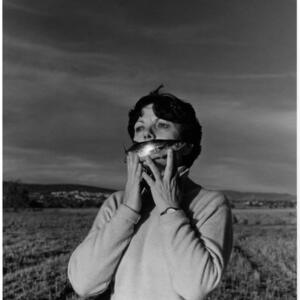Outstanding contribution to photography award 2021
The World Photography Organisation is delighted to announce the acclaimed Mexican photographic
artist Graciela Iturbide as the Outstanding Contribution to Photography recipient of the Sony World
Photography Awards 2021. Widely recognized as Latin America’s greatest living photographer, Iturbide’s
work offers a photographic account of Mexico since the late 1970s and is celebrated for its defining
contribution to the country’s visual identity.
25 images from Iturbide’s oeuvre will be presented in a virtual exhibition available to view via the World
Photography Organisation’s website from the 15 April. The selection, made by the artist, highlights
significant milestones and themes from her five-decade career including some of her most iconic images
such as Nuestra Señora de las Iguanas (Our Lady of the Iguanas) and Mujer ángel (Angel Woman).
In images of everyday life and its culture alongside those of ritual and religion, Iturbide’s work explores her
country’s many complexities and contradictions, questioning its inequalities and highlighting the tensions
between the urban and rural, modern and indigenous. Her photographs go beyond straight
documentary narratives and aim to provide a poetic vision of their subjects informed by the
photographer’s personal experiences and journey.
Graciela Iturbide was born in 1942 in Mexico City to a traditional Catholic family where she was the eldest
of 13 siblings. Growing up, she admired her father’s amateur photography and cherished the box
containing her family’s photographs. She married at the age of 20 and had three children in quick
succession. It was not until 1969, at the age of 27, that she decided to pursue her artistic passions and
enrol in the Film Center of the Universidad Nacional Autónoma de México . It was there, while studying
with modernist master and subsequent mentor Manuel Álvarez Bravo, that she decided to turn her
attention towards photography. It was during this time that photography also became a form of therapy
for Iturbide when, in 1970, she tragically suffered the loss of her six year-old daughter, Claudia.
Soon thereafter, Álvarez Bravo asked Iturbide to be his assistant and she began accompanying him on
his journeys across Mexico. Iturbide was greatly influenced by Álvarez Bravo’s interest in indigenous
communities and his philosophy of Mexican tempo better known as ‘hay tiempo’ or ‘there is time’. It was
this notion, present throughout Mexican art and literature, that helped Iturbide develop her own
photographic language as a careful and patient observer whose images evoke the lyricism and poetry
found in everyday moments.
During the late 1970s Iturbide became a central figure in a growing movement of Latin American
photographers banding together to ‘reclaim’ their countries’ visual identities from the gaze of foreign
photographers. In 1978, as part of a larger initiative to contribute to the recovery of indigenous cultures,
Iturbide was commissioned by the Ethnographic Archive of the National Indigenous Institute of Mexico to
photograph the country’s indigenous population. Working alongside anthropologist Luis Barjau, Iturbide
embedded herself in the community of Seri Indians, learning their customs and recording their way of life,
with a particular focus on their forced adaptation to capitalism.
The results of Barjau and Iturbide’s joint work were published in 1981 in the book Los que viven en la arena
(Those who live in the sand). At the time of publication, it was one of very few Mexican studies that existed
among the hundreds of American texts and was instantly recognized for its more authentic contribution.
The experience of living with the Seri marked the beginning of a significant part of Iturbide’s career,
confirming her deep commitment to exploring her country and her desire to build relationships with and
photograph its diverse population.
Today, her work with the Seri and later the Zapotec community in Juchitán is among Iturbide’s most
celebrated. Not seeking to exoticize her subjects, Iturbide’s images offer the perspective of one wishing
to understand and acknowledge her own culture. In addition to photographs of indigenous populations
in Mexico the selection also includes images from Iturbide’s travels to Italy, the United States and India
focusing on the natural world and highlighting her fascination with its inherent symbolism and spirituality.
Commenting on her work and acceptance of the award, Graciela Iturbide says: I am delighted and
honored to receive this award. This kind of acknowledgment is a great incentive to continue working.
Everything that I photographed throughout my life has filled my spirit and pushed me to repeat the
process again and again. Photography, for me, creates a feeling of understanding towards what I see,
what I live for, and what I feel and is a good pretext to know the world and its culture.
The Outstanding Contribution to Photography honours a person or group of people that have made a
significant impact on the photographic medium. As its 14th recipient, Graciela Iturbide joins a
distinguished list of iconic names including William Eggleston (2013), Mary Ellen Mark (2014), Martin Parr
(2017), Candida Höfer (2018), Nadav Kander (2019) and Gerhard Steidl (2020), to name a few.
The overall winners in the Student, Youth, Open and Professional competition of the Sony World
Photography Awards 2021 will be announced on the 15 April 2021 via the World Photography
Organisation’s digital and video platforms. For more information about winners and shortlists please visit
www.worldphoto.org

